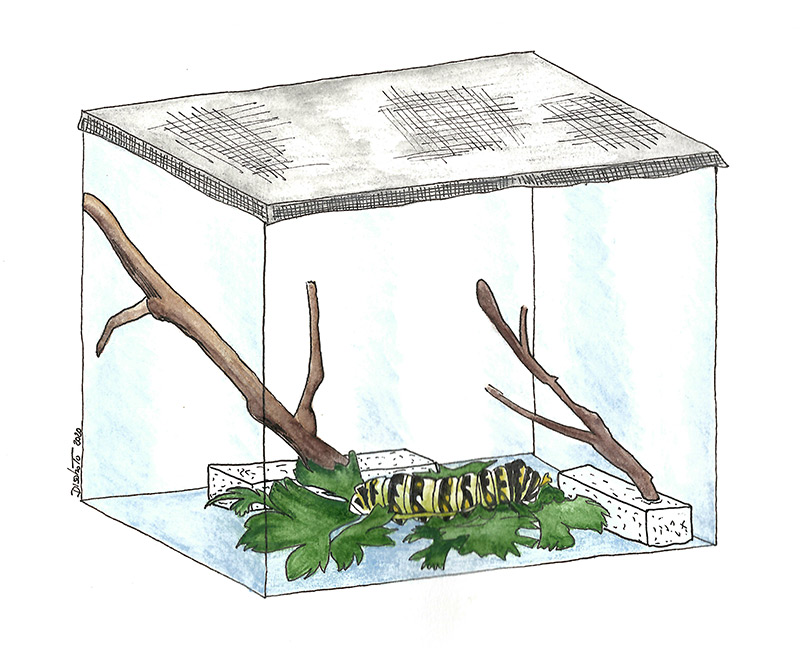Needed materials
- Nurse plant
- 1 container: plastic box or glass tank
- Mesh net, as fine as that of mosquito nets (large enough to cover the container)
- Dry twigs
- Piece of polystyrene (example: lid of an ice cream tray)
What to do
- Get one caterpillar at least. If to realize your wild garden you have planted or sown those species that attract pollinating insects (see information/laboratory sheet on the hedge, aromatic corner and meadow), such as butterflies, it is not excluded that you may find caterpillars on some of these. As you know (see information sheet “Lepidoptera: attracted species”) many species of butterflies are strictly linked to one or more nurse plants, feeding on their leaves at the caterpillar stage; this can permit you to find out more easily both the caterpillars and what they will have to feed on once "captured".
- Place the caterpillar in a transparent plastic box or, if you have more than one, in a large glass tank (like that of an aquarium). The container must then be closed with a small net, in order to avoid the escape and at the same time ensure that they have a continuous exchange of oxygen.
- Feed the caterpillar daily, with fresh leaves coming from the nurse plant. This is because leaves belonging to other plants, could not be eaten.
- Clean the container daily from excrement to avoid the origin of mould, bacteria, and generally an unhealthy environment for the caterpillar.
- Always be careful when the animal is handled for cleaning and replacement leaves, it is very fragile! Keep your hands always clean during this operation, to avoid transmitting possible bacteria or other dangerous microorganisms.
- Prepare in the container, some dry twigs where the caterpillar can go to "settle" making the chrysalis. Fix the small branches vertically, piercing the polystyrene lid of an ice cream tray to be placed in the box.
- Once the caterpillar has found a suitable place to turn into a chrysalis, do nothing else. So do not clean and do not put new leaves, just wait for the transformation into adult butterfly.
- Once turned into an adult butterfly, wait for it to have completely spread the wings (even more than an hour) and free it in the garden, but only if it is a beautiful sunny day, not if it’s rainy or windy!

Keep with you a notepad where to take note of all the observations made, from the "capture" of the caterpillar to its transformation into a butterfly. Also take photos to document and enhance your notes!